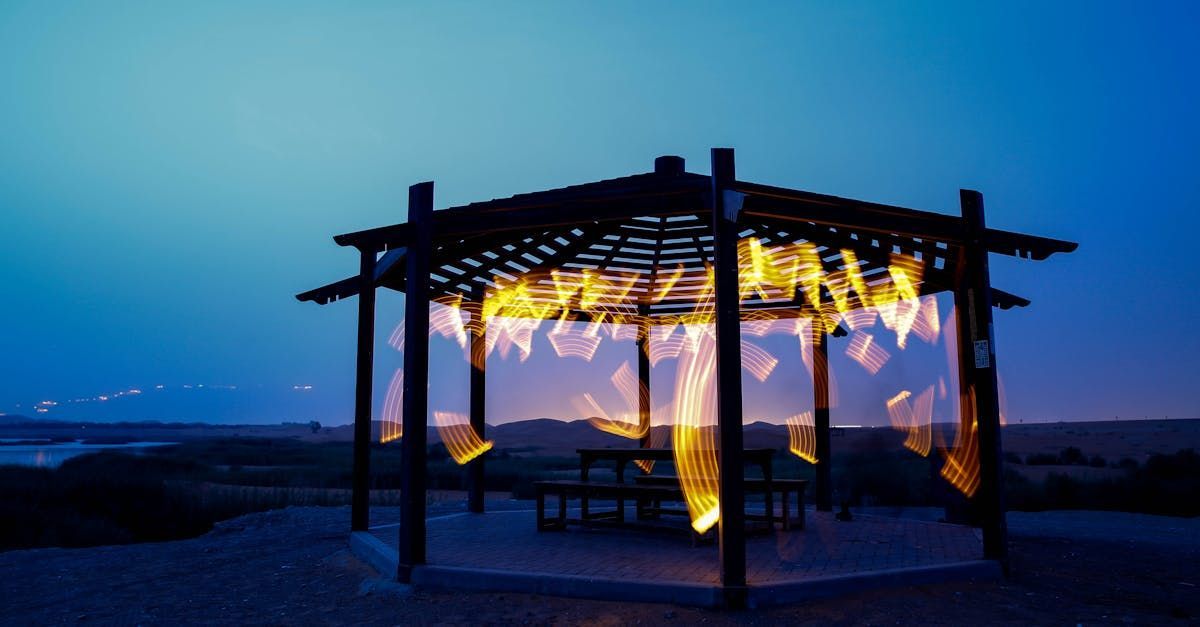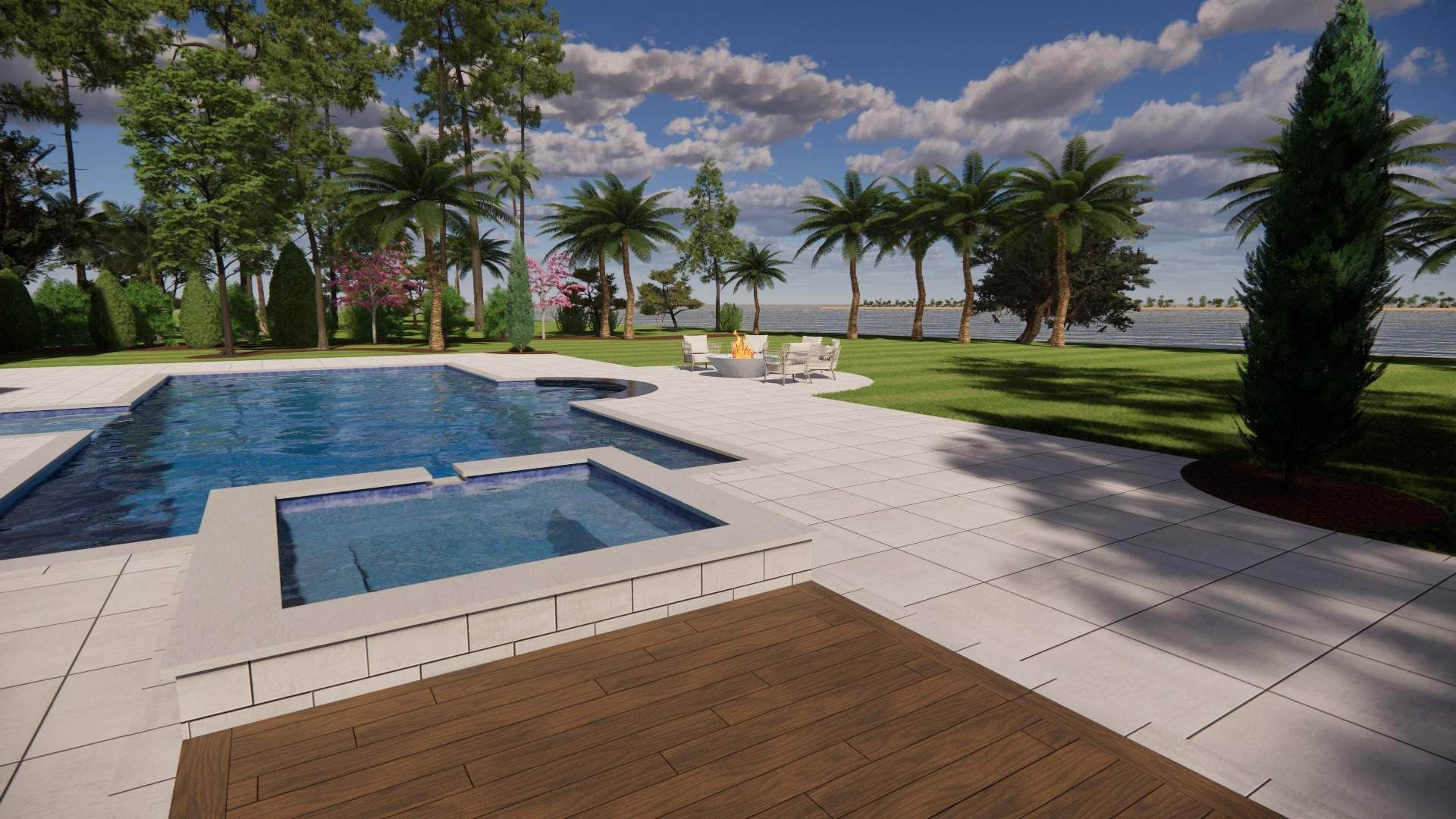Gazebo Installation for Coastal Homes: Hilton Head Guide
Key takeaways:
- Coastal gazebos require special considerations due to salt air and high winds
- Materials like vinyl, composite, and treated wood are best for longevity
- Proper foundation and anchoring are crucial for stability in coastal conditions
- Local regulations on Hilton Head Island must be followed for installation
- Professional installation is recommended for best results in coastal environments
Understanding Coastal Challenges for Gazebo Installation
When it comes to installing a gazebo on Hilton Head Island, there are unique challenges that come with our coastal environment. The salt air, high winds, and potential for hurricanes all play a role in how we approach gazebo installation here on the island.
One of the biggest issues we face is corrosion. The salt in the air can quickly eat away at metal components, so we have to be extra careful about the materials we use. This doesn't mean you can't have a beautiful gazebo, it just means we need to be smart about our choices.
Another factor to consider is the wind. Hilton Head can get some pretty strong gusts, especially during storm season. A poorly installed gazebo could become a dangerous projectile in high winds, so proper anchoring is essential.
Choosing the Right Materials for Your Coastal Gazebo
When we're installing gazebos here on Hilton Head, we always recommend materials that can stand up to our coastal conditions. Vinyl is a popular choice because it's resistant to salt air and doesn't rot or rust. It's also low maintenance, which is a big plus for many homeowners.
Composite materials are another good option. They're made to look like wood but don't require the same level of upkeep. They're resistant to moisture and won't warp or crack like traditional wood might in our humid climate.
If you've got your heart set on a wooden gazebo, don't worry. We can still make that happen. We just need to use wood that's been treated to withstand the elements. Cedar and redwood are naturally resistant to decay and insects, making them good choices for coastal areas.
The Importance of a Solid Foundation
One thing we can't stress enough is the importance of a good foundation for your gazebo. Here on Hilton Head, we're dealing with sandy soil that can shift over time. A poorly laid foundation could lead to an unstable structure down the line.
We typically recommend a concrete slab foundation for gazebos in our area. It provides a stable base that won't shift with the sand. Plus, it helps protect the bottom of the gazebo from moisture that could seep up from the ground.
If you're looking for something a bit more elevated, we can also install your gazebo on concrete footings. This can be a good option if you want to create a bit more airflow underneath the structure.
Anchoring Techniques for Coastal Gazebos
Given our propensity for strong winds here on Hilton Head, proper anchoring is crucial. We use heavy-duty anchors that are designed to withstand hurricane-force winds. These are typically embedded deep into the concrete foundation or footings.
For wooden gazebos, we often use a combination of lag bolts and hurricane straps. The lag bolts secure the structure to the foundation, while the hurricane straps provide additional protection against uplift during strong winds.
With vinyl or composite gazebos, we use specialized anchoring systems that are designed to work with these materials. These often involve metal brackets that are concealed within the structure of the gazebo for a clean look.
Navigating Local Regulations for Gazebo Installation
Before we start any gazebo installation on Hilton Head, we always make sure we comply with local regulations. The Town of Hilton Head Island has specific rules about structures like gazebos, including setback requirements and height restrictions.
In some cases, you may need to get a building permit before we can start work. This is especially true if your gazebo is going to be over a certain size or if it will have electrical components.
We also need to be mindful of any homeowners association rules that might apply to your property. Some neighborhoods have restrictions on the style or size of outdoor structures.
Designing Your Coastal Gazebo
When it comes to designing your gazebo, we've got plenty of options that work well in our coastal environment. Screened-in gazebos are popular here on Hilton Head because they protect from our infamous mosquitoes and no-see-ums.
Many homeowners opt for a coastal-inspired design that complements the island aesthetic. This might include features like a cupola on top or decorative railings with a nautical theme.
We also recommend considering the orientation of your gazebo. Positioning it to catch the sea breeze can make it a much more pleasant space to relax in during our hot summer months.
Preparing Your Yard for Gazebo Installation
Before we can install your gazebo, we need to make sure your yard is ready. This usually involves clearing the area where the gazebo will go and ensuring the ground is level.
If you've got any underground utilities in the area, we'll need to have them marked before we start digging. This is a safety precaution to avoid damaging any important lines.
We'll also need to consider drainage. Hilton Head can get some heavy rains, so we want to make sure water doesn't pool around your new gazebo. This might involve grading the surrounding area or installing a French drain system.
The Installation Process
The actual installation of your gazebo typically takes a few days, depending on the size and complexity of the structure. We start by laying the foundation, which needs time to cure before we can build on it.
Once the foundation is ready, we'll assemble the gazebo. If it's a prefab unit, this process can go pretty quickly. Custom-built gazebos take a bit longer but allow for more personalization.
After the main structure is up, we'll add any finishing touches like roofing, railings, and paint or stain if needed. We'll also make sure all the anchoring is secure and that the structure is level and stable.
Maintaining Your Coastal Gazebo
Once your gazebo is installed, it's important to keep up with maintenance to ensure it lasts for years to come. This is especially true in our coastal environment where salt and humidity can take a toll.
For vinyl and composite gazebos, regular cleaning is usually all that's needed. A gentle soap and water solution can remove any salt buildup or mildew.
Wooden gazebos require a bit more care. We recommend resealing or restaining every few years to protect the wood from moisture and UV damage.

Enhancing Your Gazebo For Coastal Living
To really make your gazebo a part of coastal living, consider adding some enhancements. Outdoor curtains can provide shade and privacy, while also adding a touch of beachy elegance.
Installing a ceiling fan can help keep the air moving on those still, humid days we sometimes get here on Hilton Head. Just make sure any electrical work is done by a professional and is up to code for outdoor use.
Adding some comfortable seating and maybe a small table can turn your gazebo into the perfect spot for enjoying your morning coffee or an evening cocktail while listening to the distant sound of waves.
Popular Gazebo Styles for Hilton Head Homes
Here on Hilton Head, we see a variety of gazebo styles that work well with our coastal aesthetic. The classic octagonal gazebo is always popular, offering 360-degree views of your surroundings.
Rectangle gazebos are becoming more common, especially for larger properties. They can provide more usable space and often work well as outdoor dining areas.
We've also seen an increase in modern, minimalist gazebo designs. These often feature clean lines and a more open structure that complements contemporary home styles.
Integrating Your Gazebo with Existing Landscaping
When we install a gazebo, we always consider how it will fit with your existing landscaping. We might suggest adding a pathway leading to the gazebo to make it feel more integrated with your yard.
Planting some native Lowcountry plants around the base of the gazebo can help it blend in with the natural environment. Things like sea oats, muhly grass, or even small palm trees can create a nice transition from your lawn to the structure.
If you've got a pool, we can position your gazebo to complement it. Many homeowners like to use their gazebo as a poolside retreat or changing area.
Gazebo Alternatives for Coastal Homes
While gazebos are great, they're not the only option for creating an outdoor retreat on your Hilton Head property. Pergolas can be a good alternative if you want something a bit more open.
Pavilions are another option that can work well in coastal settings. They typically have a solid roof but open sides, providing more protection from the sun and rain than a traditional gazebo.
For those looking for something unique, we've even installed a few tiki huts on the island. These can lean into that tropical, beachy vibe that many homeowners are after.
Cost Considerations for Coastal Gazebo Installation
The cost of installing a gazebo on Hilton Head can vary widely depending on the size, materials, and complexity of the project. A basic vinyl gazebo might start around $5,000, while a large, custom-built wooden gazebo could run $20,000 or more.
It's important to remember that while the upfront cost might be higher for more durable materials, they can save you money in the long run by requiring less maintenance and lasting longer in our coastal environment.

Seasonal Considerations for Gazebo Use on Hilton Head
One of the great things about having a gazebo here in Hilton Head is that you can use it year-round. Our mild winters mean you can enjoy outdoor living even in December and January.
However, there are some seasonal factors to keep in mind:
- Spring: Perfect for enjoying your gazebo, but watch out for pollen
- Summer: Use fans or screens to keep cool and keep bugs at bay
- Fall: Hurricane season, make sure your gazebo is properly secured
- Winter: While mild, you might want to add a patio heater for cooler evenings
Working with a Professional Installer
While some handy homeowners might be tempted to tackle gazebo installation as a DIY project, we recommend working with a professional here in Hilton Head. The unique challenges of our coastal environment mean there's a lot that can go wrong if you're not familiar with local conditions and building practices.
A professional installer will not only ensure your gazebo is built to last, but they'll also handle all the permitting and make sure everything is up to code. This can save you a lot of headaches down the line.
Plus, professional installers often have relationships with manufacturers and can sometimes get better prices on materials. This can help offset the cost of professional installation.
Financing Options for Your Gazebo Project
We understand that adding a gazebo to your Hilton Head home is a significant investment. That's why we offer financing options to help make your outdoor living dreams a reality.
Many homeowners choose to finance their gazebo as part of a larger home improvement loan. This can be a good option if you're planning other outdoor upgrades at the same time.
Some manufacturers also offer financing directly for their gazebos. This can sometimes come with promotional offers like no interest for a certain period.
The Impact of a Gazebo on Property Value
While it's hard to put an exact number on it, a well-designed and properly installed gazebo can add value to your Hilton Head property. It's seen as an attractive amenity, especially in our area where outdoor living is such a big part of the lifestyle.
A gazebo can also help your property stand out if you ever decide to sell. It creates a focal point in your yard and can make a lasting impression on potential buyers.
Just remember that to add value, your gazebo needs to be well-maintained and in keeping with the overall style of your home and neighborhood.
Customizing Your Gazebo for Hilton Head Living
One of the great things about installing a gazebo is the ability to customize it to your specific needs and tastes. Here at Hilton Head, we've seen some creative customizations that embrace island living.
Some homeowners have added built-in coolers or small refrigerators to their gazebos, perfect for keeping drinks cold on hot summer days. Others have installed sound systems so they can enjoy music while relaxing outdoors.
We've even installed a few gazebos with retractable screens. These offer the best of both worlds - an open-air feel when you want it, but protection from bugs when needed.
Environmental Considerations for Gazebo Installation
Here at Hilton Head, we're all about preserving our beautiful natural environment. That's why we always consider the environmental impact when installing a gazebo.
We try to use sustainable materials whenever possible. This might mean choosing wood from responsibly managed forests or opting for recycled composite materials.
We're also careful about how we impact the surrounding landscape during installation. We take care to protect existing trees and plants, and we're always mindful of local wildlife.
Gazebo Installation for Coastal Homes
Installing a gazebo on your Hilton Head property can be a great way to enhance your outdoor living space and embrace the coastal lifestyle. With the right materials, proper installation, and regular maintenance, your gazebo can provide years of enjoyment.
Remember, the key to a successful gazebo project is working with professionals who understand the unique challenges and opportunities of building in our coastal environment. They can help you navigate everything from material selection to local building codes.
Whether you're looking for a quiet spot to enjoy your morning coffee, a place to entertain friends, or just a beautiful addition to your landscape, a well-designed gazebo can be the perfect solution. So why not start planning your perfect coastal gazebo today? For more information, you can visit our website or contact us.



